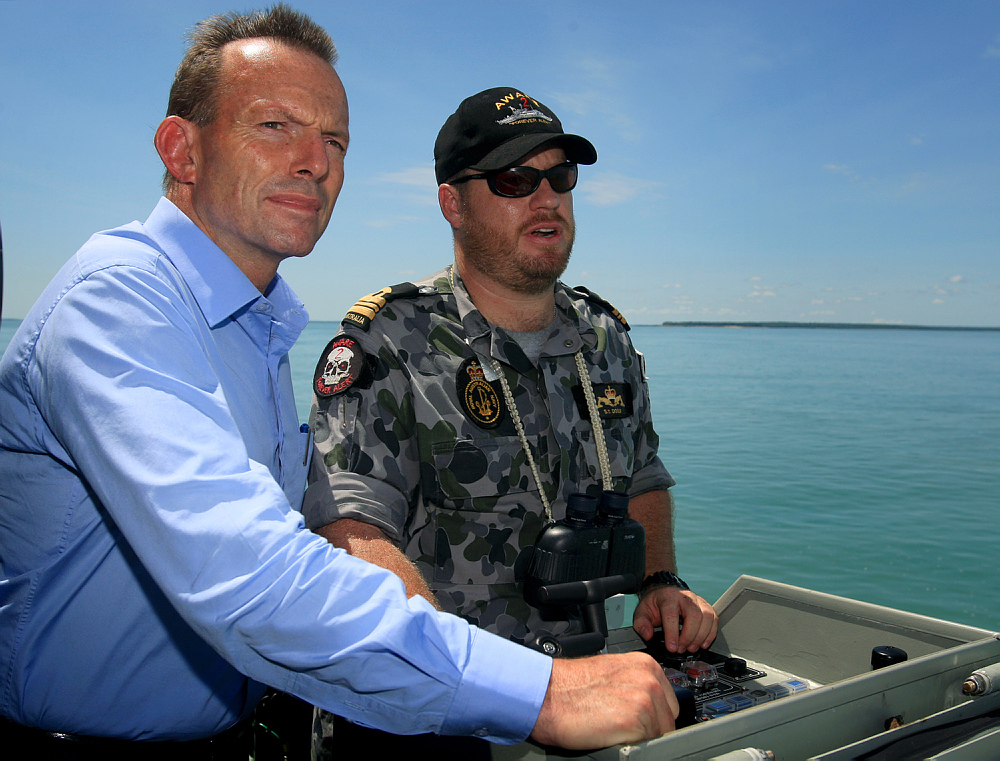
Tony Abbott’s speech today to the RSL National Conference sets out some important pointers on the shape of defence policy under a future Coalition government. On spending, it’s been clear for some time that the Opposition had no intention of immediately reversing the cuts announced in the last budget. Abbott said:
Any savings that the Coalition can find in the defence bureaucracy will be reinvested in greater military capacity. Our aspiration, as the Commonwealth’s budgetary position improves, would be to restore the three per cent real growth in defence spending that marked the final seven years of the Howard government.
An ‘aspiration’ to return to spending growth is better than no prospect of growth, but it holds out little hope for a return to growth soon, and one must presume that the 3% growth will start from the newly established lower spending base. (See post below ‘Table of the week’ for a calculation of the effect of 3% real growth on the Defence budget.)It’s to be expected that the Opposition would look to make savings from the defence bureaucracy but encouraging that no arbitrary saving figure was announced. Indeed Abbott’s speech is remarkably cautious in the way it doesn’t commit to a number of iconic projects. There’s no explicit commitment to twelve submarines or 100 Joint Strike Fighters, only a commitment to making decisions about them within 18 months of an election:
This is not a decision … that can be made from opposition. Within 18 months of an election, an incoming Coalition government would make the short and medium term decisions necessary to ensure that Australia has no submarine capability gap.
The other big procurement decision is the timing of our acquisition of the Joint Strike Fighter. Again, without detailed operational advice, this is not a decision that an opposition can make but we will make it within 18 months of a change of government.
Very sensibly the Opposition wants to look at the books and the detailed information held by the project office before making big decisions.
There’s an additional 18-month commitment in Abbott’s speech:
Within 18 months of an election, an incoming Coalition government would publish a new Defence White Paper with costed, affordable ways to meet Australia’s defence and national security objectives.
A change of government would therefore consign the projected 2013 White Paper to a shelf life of just months. Defence officials shouldn’t despair though, because it’s difficult to see major policy differences emerging. For example, Abbott anticipates ‘basing more of our military forces in Northern Australia’, which is hardly a million miles away from Stephen Smith’s own thinking.
The biggest commitment in Abbott’s speech relates to submarines and ensuring ‘… that Australia has no submarine capability gap.’ Behind that simple sentence lies an enormously difficult task: how to span the widening gap between the likely end of life of the Collins boats and the Sea 1000 replacement. That will be the big capability task over the next few years. An interim submarine capability, either in the form of a life-of-type extension for Collins or a rapid acquisition of another type, will absorb every aspirational Defence spending increase that can be thrown at it. It’s a critical task and work on it can’t start soon enough.
Peter Jennings is executive director of the Australian Strategic Policy Institute. Image courtesy of Flickr user Royal Australian Navy.

